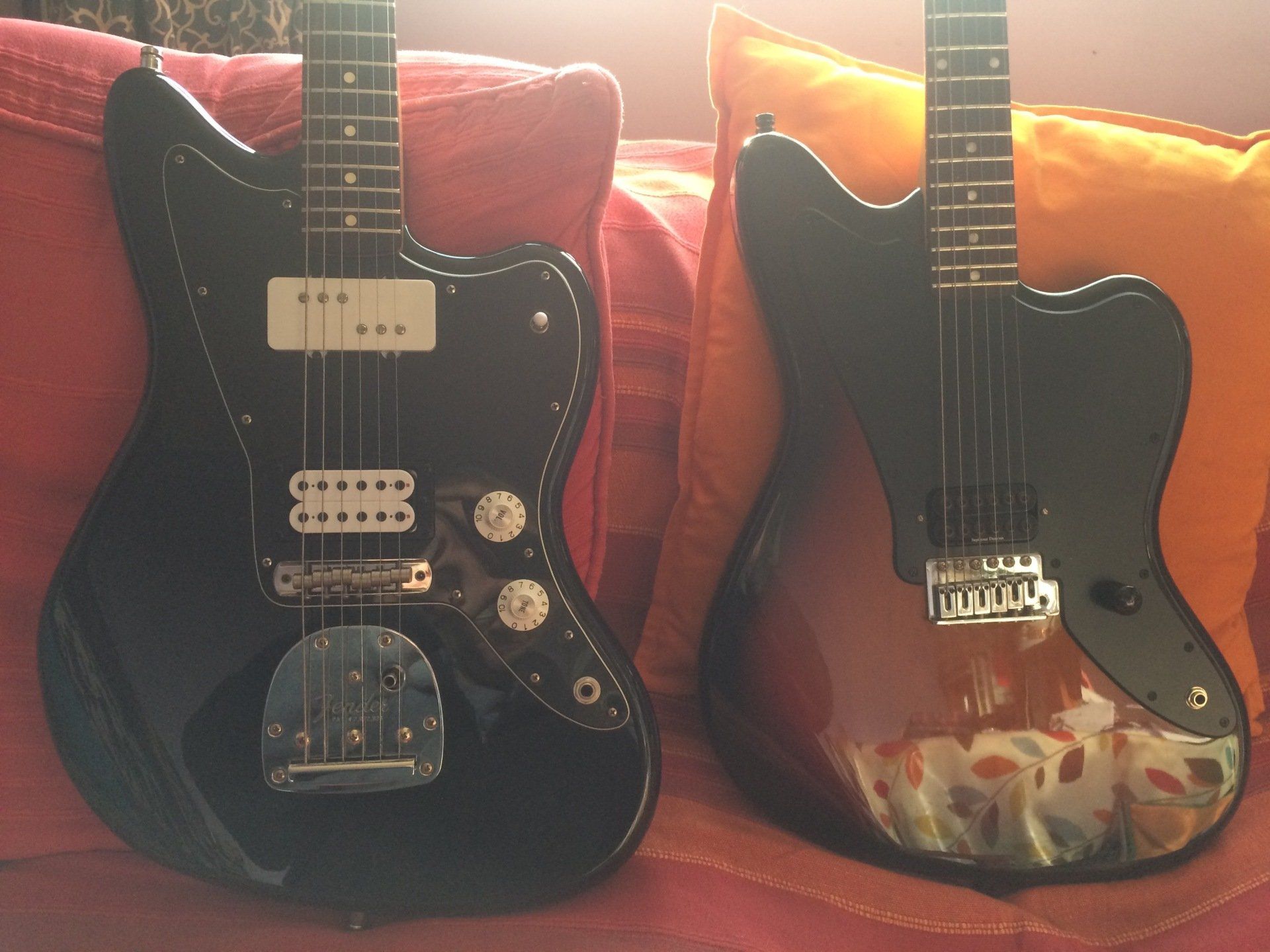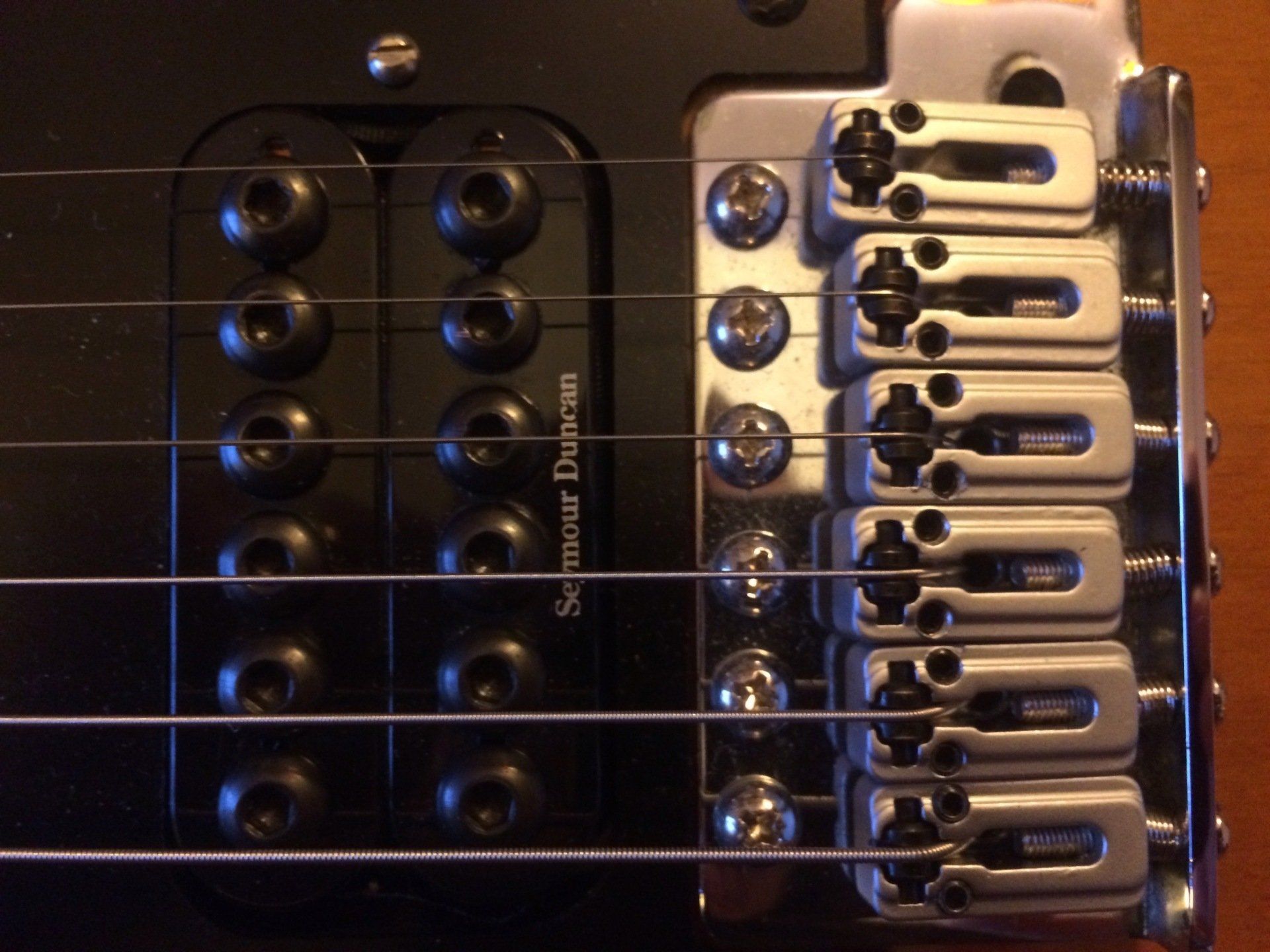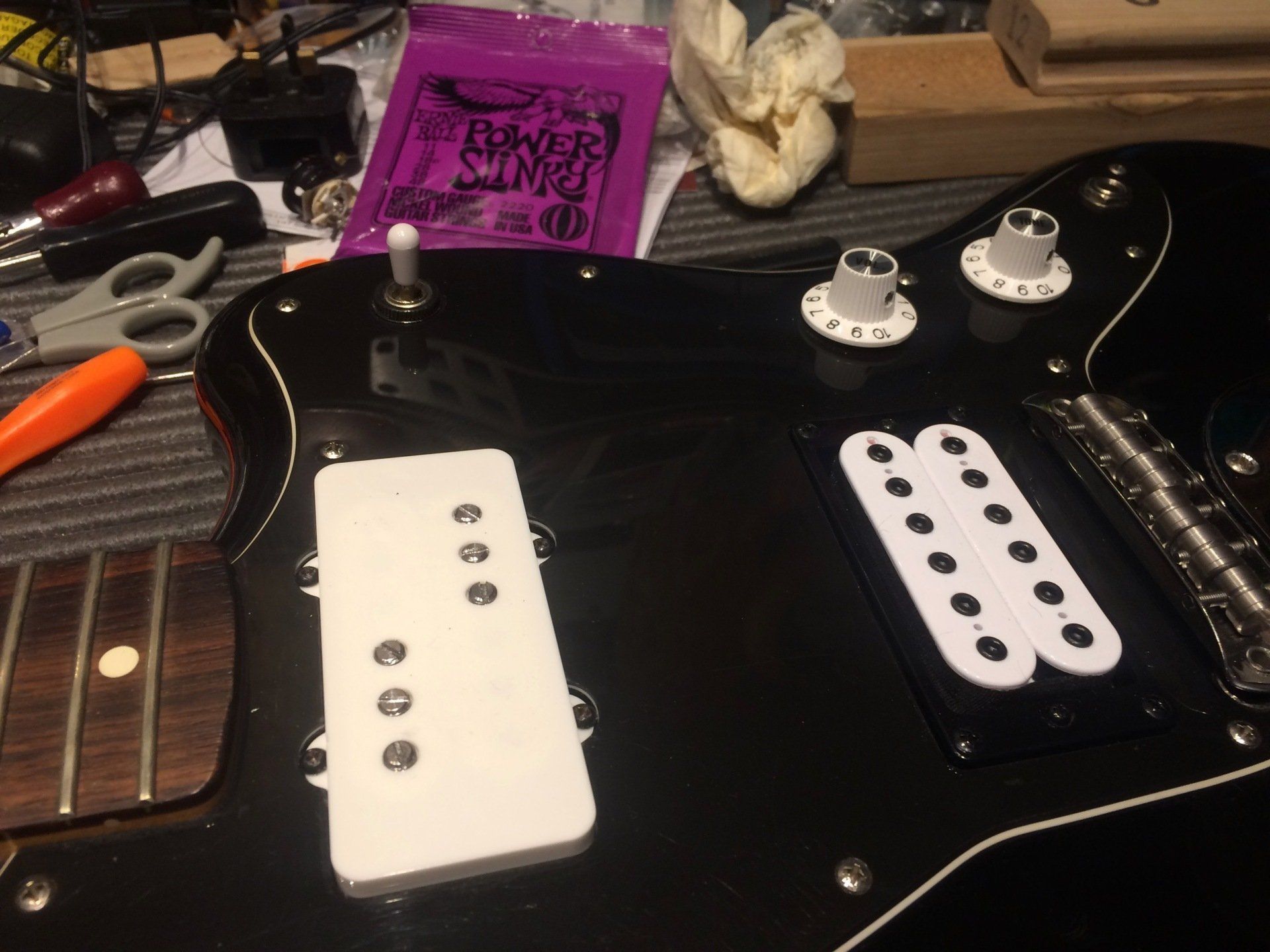Offset Upsets...
... putting the hex on Surf Metal ceramics.
So, here’s a couple of guitars, from different clients, that we had in recently for a variety of jobs; both with fret damage that needed filing out and re-crowning. It struck me that beneath their classic curves both of these guitars were quite savage beasts. Both have high output humbuckers in the bridge position of the kind favoured by Metal musicians — a Bare Knuckle Aftermath and a Seymour Duncan Invader. I know, they both sound like you’d have to order them from Lovehoney don’t they? They're definitely not Surf guitars anymore. But then again, a few years ago there was a flurry of recognition in online communities that quite a lot of Heavy Metal guitar stylings might actually have come from Surf Music. All you had to do was turn the reverb way down and the distortion way up. And for all the humour that was got out of it, there was more than a grain of truth. After all, guitarists that grew up in the ‘70s and ‘80s would often have learnt licks from guitar bands of the ’60s. I’m going to discuss these guitars at greater length in this post, but here's an article from guitarworld.com that drew some of those parallels with some fun video links to back it up.
Clearly, if you clean up all the distortion from classic metal riffs and soak it in reverb you get some seriously surf stylings. Tubular dude. Here’s an earlier source for that stylistic stereotyping with some amusing artistic juxtapositions that appeared on
YouTube. Did anybody spot the original version of our sunburst Squier Jagmaster playing Slayer at 2:50? It’s all starting to come together…
First in the shop was this Squier MIC Jagmaster sporting a Seymour Duncan SH-8B Invader. The single-ply black pick guard is a custom job and is finished to a high standard. When I had the ‘guard off to fix the jack connection I saw that the body had a factory swimming pool rout through the middle, which gives no clues as to the original pup configuration. I don’t believe this model was ever sold in a single pup format so I imagine it was customised by the owner. I believe it’s from the early 2000s and is pretty much a cheaper copy of the rather excellent CIJ Vista Jagmaster model. Both these far-east variants came with twin humbuckers, from what I can find online, but it would be easy to go Strat with the electrics in these scooped out bodies, or even 3 HBs. I don’t believe Seymour Duncan make an Invader with Fender string spacing so this pup is a little narrow for this guitar, both for the saddles and the pick guard rout. The guitar needed a lot of work to get the frets levelled and re-crowned, the jack socket needed re-soldering and someone had installed a set of cheap “roller” saddles on the Strat style trem that didn’t roll very well. Not only that but they were too long to allow for good intonation. And they were too wide to fit the bridge plate, causing splayed string spacing. Not only that, they were too rigid, in combination with being overlong, to allow for a low action because they were left floating up in the air once the grub screws were backed out past a certain point. All in all a real botched job. A new set of smaller, generic saddles sorted out all these issues and the Jagmaster was set up nicely — once the many high spots had been filed down across all the frets, of course. It now plays like a dream, but maybe that’s because I have small hands. It’s an inch and a half shorter than most Fenders of course, being more Jag than ‘master, and that means nothing is a stretch to play on this neck.
The Fender MIM Blacktop Jazzmaster had some nasty cuts from 3rd string impact into it’s 4th fret and flat spots absolutely all over the neck that looked like the frets were hammered in but never crowned. This guitar also arrived with a Mustang style bridge, which to my mind is always the first thing to do with any traditional Fender Offset that you intend on playing properly. Caveat emptor however, as there are a lot of variations in Mustang style bridges out there these days. The bridge this guitar came with had two main issues. The saddles were too narrow for a start (in complete contrast to the last guitar) causing lateral movement because they did not butt up against each other as they would in an original Mustang. An even bigger problem was the diameter of the saddles
— at least the middle four anyway. Being a modern Blacktop this JM has a 9.5” radius fingerboard; the bridge it came with meanwhile was a vintage radius at 7.25”. Mastery hardware is excellent and I’ve used it many times, but for a lot less money and a more traditional look, my favourite bridge for any Offset is the Staytrem. Excellent materials, properly engineered, machined & finished to a high standard and with several improvements to the original design
— the most important selling point is they make them in both 7¼ & 9½ radii! The owner was happy to order one and also wanted me to install new pickups: the previously mentioned Bare Knuckle Aftermath in the bridge of course and a very nice Fender Wide Range copy in a Jazzmaster pup cover. This neck pup sounds great and is from the hands of a really good maker. Marc Ransley at Mojo Pickups in Halifax is a bespoke pickup maker who really knows how to wind a bobbin. I have used several of his pups in builds and have come across them in a few great guitars. I also swapped the black witch hats and switch tip for white ones which the client was very pleased with, and I think works well with the pups he’d chosen. For a full discussion of the range of aftermarket hardware options when it comes to the “surf guitars” check out my earlier
Offset Lowdown blog.
But it’s the high output pups in the bridge positions that we’re interested in here. The Aftermath bridge unit that I put into the Jazzmaster, handmade in Falmouth, Cornwall uses three ceramic magnets (Aftermath neck units are alnico 5) and the pole pieces in both bobbins are all screws, which in this particular version are all allen heads. The bobbins are “symmetrically wound” according to Bare Knuckle — I presume that means for output impedance. I believe Bare Knuckle scatter wind most of their bobbins by hand and I imagine there are quite a lot of winds on these particular bobbins. Four conductor output for your switching pleasure comes as standard. The pickup voicing would seem to be ideally tailored to metal and BK-in-the-CK claim the Aftermath “tracks fast riffing extremely accurately, mids are focused and intense for ultimate punch no matter how dense the mix or how low the tuning, and highs are precise and articulate”.
The Invader meanwhile is also a ceramic pup — indeed like the Aftermath it has three magnets, although as far as I’m aware it has been around a lot longer. And again, it also has 12 hex-head screw poles — in this case big dome head “metal oxide” bolts, as SD describe them. I don’t think with pole pieces this big, and with magnets this pokey you’re going to notice much difference in relative string volume by staggering the heights of these poles, but I may be wrong. It’s possible that there is an advantage to be had from an improved volume balance string to string. And that goes for the Aftermath as well, though it’s poles are a bit more conventional, like a '70s DiMarzio. Like the Bare Knuckle, the Seymour Duncan comes with four core cable for coil tapping and series/parallel options. SD advertise the Invader as being wax potted and I believe that BK pot their pups as standard, unless requested not to by the client for a custom build. Seymour Duncan pups are made in Santa Barbara, CA, though I believe most of their models are machine wound.
I’m intrigued by several things about these bridge position irons. Do the build similarities between these two pups mean that the Aftermath is BK’s version of the SD classic? Are the magnets fitted to cover a pair of strings each in order to define three distinct tonal registers? Much more likely that they run the length of the bobbins, right? Are the big pole heads of the Invader just for show? Maybe next time either of these units come through the shop I’ll risk stripping them down, taking some gut-shots and recording some comparisons. There is a sonic reason for the large pole piece caps on the Invader detailed on Seymour Duncan’s website. Both of these pickups are naturally bright due to their ceramic magnets and SD claim for the SH-8 that “By using those unique hex caps, the highs are softened, leaving you with a lot of low-end power and enough cut in the highs, thus creating the huge tonal ‘thump’ the Invader provides. If you were to use a regular set of pole pieces in the Invader you’d end up with a pickup about as hot but with less power in the lows: the tonal spectrum would shift from the lower mids to the higher mids.”
©️ Mark Vickers 11th March 2021.





